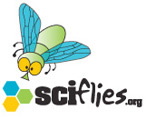Sort by
Search Results: New Projects
Funding to Date: 1% See Full Project
Funding to Date: 1% See Full Project
Funding to Date: 76% See Full Project
Funding to Date: 1% See Full Project
Funding to Date: 11% See Full Project
Funding to Date: 1% See Full Project
Funding to Date: 1% See Full Project
Funding to Date: 0% See Full Project
Funding to Date: 1% See Full Project
Funding to Date: 0% See Full Project
Funding to Date: 1% See Full Project
Funding to Date: 0% See Full Project
Funding to Date: 1% See Full Project
Funding to Date: 0% See Full Project
Funding to Date: 1% See Full Project
Prevention of Alzheimer’s
“While these results are important in showing how an underlying brain pathology of Alzheimer’s disease can be prevented from causing dementia, there are many unanswered questions,” said James Mortimer, PhD, Professor of Epidemiology and BiostaFunding to Date: 1% See Full Project
Identifying Brain Changes Associated With Compulsive Hoarding
This project will help to 1) identify specific brain regions associated with the cognitive problems underlying compulsive hoarding, 2) allow us to compare the brain activation patterns of compulsive hoarding and OCD, a closely-related disorder, andFunding to Date: 1% See Full Project
Red Grouper: Prairie Dogs of Florida Bay?
The ultimate goal of my research is to explore a unique example of a marine ecosystem engineer to enhance our understanding of the mechanisms by which biodiversity is maintained in marine systems. In addition, our current understanding of the full eFunding to Date: 76% See Full Project
Wheelchair Design Reborn to Express Dancer’s Moves
The project, initiated by Merry Lynn Morris, MFA, a faculty member in the University of South Florida’s College of Arts, had the full and supportive collaboration of the USF College of Engineering Center for Assistive and Rehabilitation Robotics aFunding to Date: 1% See Full Project
Embedding Intelligent Mobile Sensor Networks in the Environment
We seek to continue developing sensing technology to place in the environment to measure change in the environment. The change can be man-made or natural. The sensor networks can measure chemicals, take physical measurements and sense biology from tFunding to Date: 11% See Full Project
Rediscovering Lost Engineering Techniques: Geotechnical Investigation of Ancient Embankments
Two approaches will be used identify embankment construction techniques: (1) establish a detailed chronology of construction using optically stimulated luminescence for each embankment stratum and (2) identify the physical, structural, and mechanicaFunding to Date: 1% See Full Project
American Pikas in Western Oregon
This research is fundamental to determining the conservation value of these peripheral populations. If we discover that they are simply demographic sinks, then their contribution to the conservation of pikas in North America is minimal. ConverselyFunding to Date: 1% See Full Project
Transformational Reductions in Human Schistosomiasis by Modifying Agricultural Practices
Our ultimate goal is to identify simple changes to agricultural management that could vastly improve human health by simultaneously enhancing nutrition and decreasing human disease risk (intellectual merit). To address this goal, we will quantify tFunding to Date: 0% See Full Project
Diversity of Interactions in a Tropical Rain Forest
Over half of all described organisms in the world are involved in plant-insect-parasite interactions, yet basic ecological assumptions about diversity of these interactions still lack quantitative tests. This Sciflies proposal seeks funding to expanFunding to Date: 1% See Full Project
Microbiology of a Major CA Estuary
The goals of this project are shared by many microbial community nucleic acid sequencing efforts, namely, to understand the composition of microbial communities across a range of conditions and physical locations within an ecosystem, to understand dFunding to Date: 0% See Full Project
Cell-based Assays of Ecotoxicity: An Alternative to Animal Testing
According to Dr. Vulpe, current toxicity tests rely on expensive, slow, whole animal toxicity studies on many species, including fish. The current approach, he adds, is impractical and requires the use of whole animals to determine risks related toFunding to Date: 1% See Full Project
Studies of Slime Molds
The slime molds (myxomycetes and dictyostelids) are common and often abundant organisms in all types of terrestrial ecosystems, where they appear to have an ecologically important role in nutrient cycling. However, members of the group remain undersFunding to Date: 0% See Full Project
Study Melting Antarctic Peninsula
We will build a network of robots to measure the physics, chemicstry and biology offshore Plamer Station Antarctica. The robots outfitted with global phones that will allow the robots controlled by undergraduates and faculty on campus. All the datFunding to Date: 1% See Full Project
Pyrolysis of Biomass: A Source of Renewable Fuels
The overall objective of my tar model compound studies is to optimize pyrolysis processes for the production of useful hydrocarbons that can be converted to gasoline and diesel, or be converted to aromatics and other refinery and chemical feedstocksFunding to Date: 0% See Full Project
Generator to Produce Electricity from Waste
The significance of this study is its potential to generate multiple micro anaerobic digester projects, thereby reducing greenhouse gas emissions. This research will present a body of knowledge that could verify the economics of methane to electriciFunding to Date: 1% See Full Project














